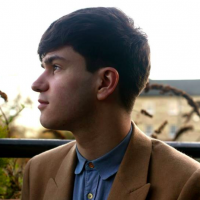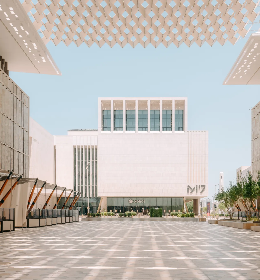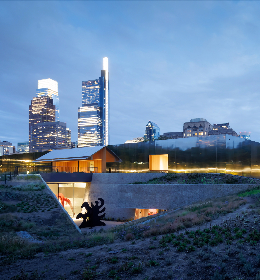As the number of people affected by forced displacement rises to a record high, totaling 65 million in 2015, it is no wonder that more and more art institutions are engaging with the humanitarian emergency engulfing Europe. But for artists making work about migration, there is a thin line to tread between trite sensationalism and something which carries real impact.
When it has not been decrying those trying to enter Europe as parasites (Europe is in fact home to a mere 6% of global refugees), the overwhelming focus of the European media has been on the suffering experienced by refugees, with images of precarious boat crossings and attempts to traverse barbed wire fences littering the front pages of newspapers across the continent. Certain artists, rather than developing counter images to this stream of media poverty porn that tends to portray refugees as homogenized victims, appear to be playing into it.
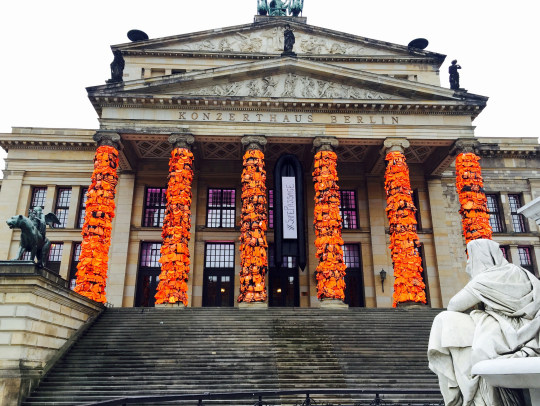
Ai Weiwei's life jacket installation at the Berlin Kontzerhaus, February 2016
Ai Weiwei has been one of the most controversial figures in this respect. His restaging of the photograph that shocked the world — which showed the body of three-year old Syrian boy Alan Kurdi washed up on a Turkish beach — elicited widespread criticism for its identification of the artist’s own oppression by the Chinese government with the plight of Syrian refugees. The work came across to many as a disingenuous stunt intended to court media attention. Last February, Weiwei wrapped 14,000 life jackets around the columns of Berlin’s Konzerthaus, no doubt a powerful gesture, but one which perpetuated the image of refugees as victims without agency.
Given the alarming rate at which anti-immigration sentiment is rising in Europe and the poor quality of debate in the public realm — nowhere more apparent than during the UK’s Brexit referendum — the need for strong oppositional voices is more pressing than ever. Within this bleak picture, can art provide a platform, not just to offer solidarity with refugees and to implore compassion from the politicians of Europe, but to critique the oppressive structures of the E.U. and other Western states themselves?
Some artists are doing just that. CAMP — the Center for Art on Migration Politics — was set up in Copenhagen by Danish activist curators Tone Olaf Nielsen and Fredericke Hansen as a platform for artists whose work deals with questions of displacement, migration, immigration, and asylum. “CAMP is designed as a platform for artists who are less established, or have just arrived in a new context and remember what life was like in the detention or asylum center,” says Nielsen. “We believe these artists can convey experiences more powerfully than those who haven’t experienced displacement first hand.”
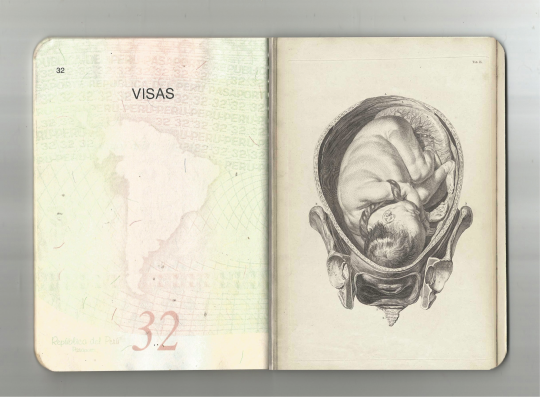
Daniela Ortiz, Jus Sanguinis (2016). Collage of Peruvian passport and medical book illustration
CAMP’s “Deportation Regime”, the fourth exhibition in the centre’s two-year program on migration politics, directs an unflinching look at the practices of detention and deportation employed by Western states. Through live performances, videos and installations,, the exhibition examines the colonial roots that structure these practices.
The performance that inaugurated the exhibition, staged by Peruvian artist Daniela Ortiz, herself an immigrant living in Spain, emphasised the racist legal principles that underpin the deportation of unwanted foreigners by sovereign states. In Jus Sanguinis (“right of blood”), Ortiz refers to the nationality law applied in all EU member states, which determines citizenship by bloodline rather than place of birth. Ortiz staged a live blood transfusion in which she received blood from a white Spanish man whilst pregnant with a child, who will not be recognized as a citizen with full rights when born in Spain next year. “The shocking nature of the piece comes from that shocking situation it refers to,” says Ortiz. “The bodily, provocative nature of my performance starts to unravel the sanitized image Europe has built for itself.”
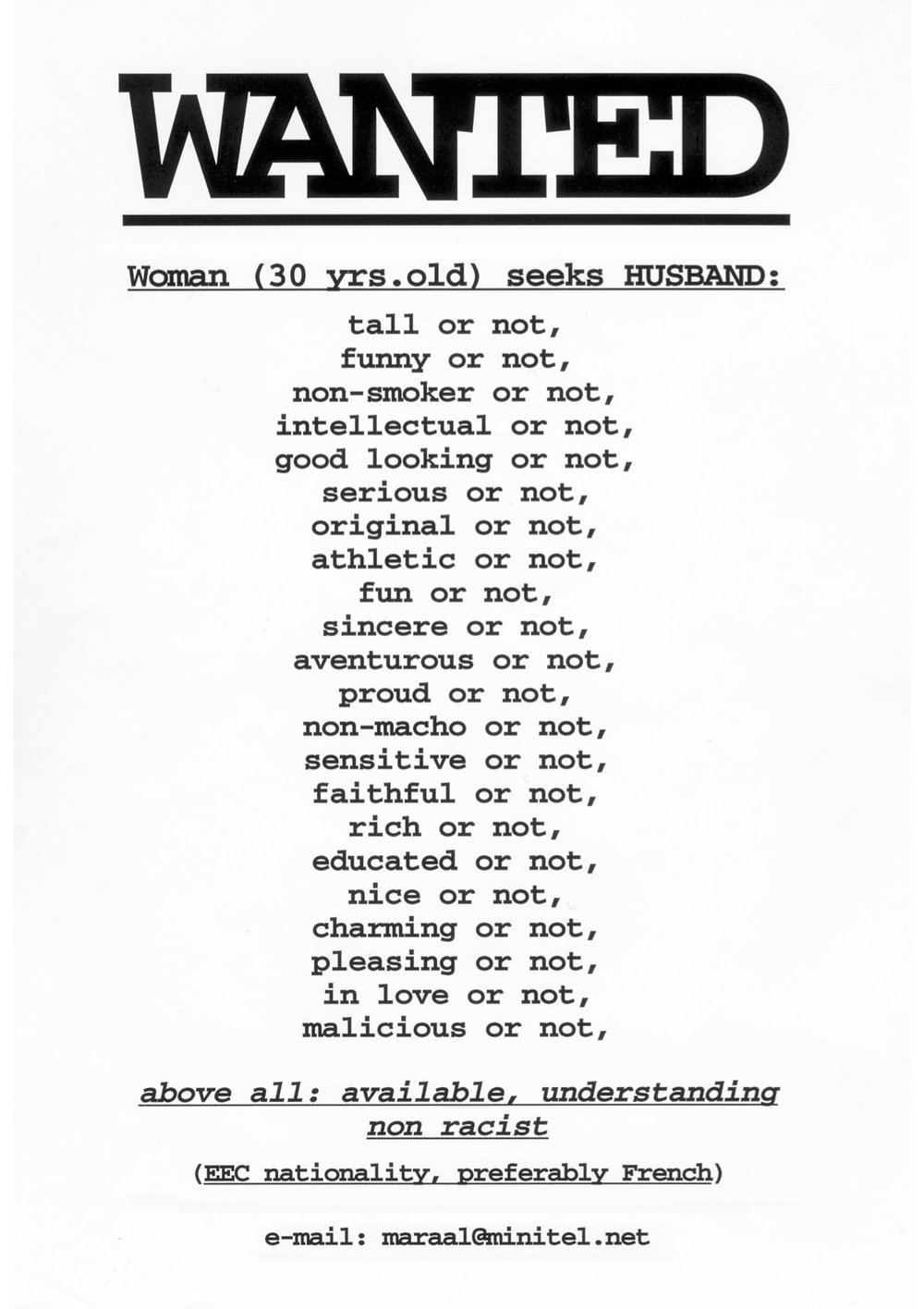
Ghazel, WANTED (Urgent) PROJECT (1997)
Ghazel, an Iranian artist now based in Paris, has similarly attention grabbing work on show at the exhibition. Her ongoing Wanted (Urgent) Project, begun in 1997, is a series of advertisements for a marriage of convenience. The graphic posters are shot through with Ghazel’s signature black humour, which she sees as a crucial vehicle for her political messages: “Humour is more effective than anything else. Chaplin moved more people than Hugo’s Les Miserables.”

Kosal Khiev, still from the video Why I Write: Verses in Exile #1 (2011)
Although these works deal with complex political issues, they have a visual immediacy to them which, as Nielsen explains, is crucial in the context of CAMP. “It’s tough curating to all these different audiences, which is why we try to focus on work that has a strong bodily or visual impact - we try to avoid very text heavy, academic work because so many of our audiences have English as their 4th or 5th language.” Part of the reason for this diverse congregation is Trampoline House — CAMP’s sister project. A reaction against the discriminatory asylum system in Denmark, Trampoline house serves as a community center which provides refugees and asylum seekers with a place of support and conviviality. Together, CAMP and Trampoline House help restore agency to these individuals, breaking down the notion of victimhood by asking, not “how can Europe do more to help refugees?” but “in what ways is Europe responsible for the current refugee emergency?” As the rhetoric used by some European politicians to discuss immigration becomes increasingly disturbing, we are in need of more initiatives like this one that marry art with aid.
“Deportation Regime” runs until December 16, 2016.



